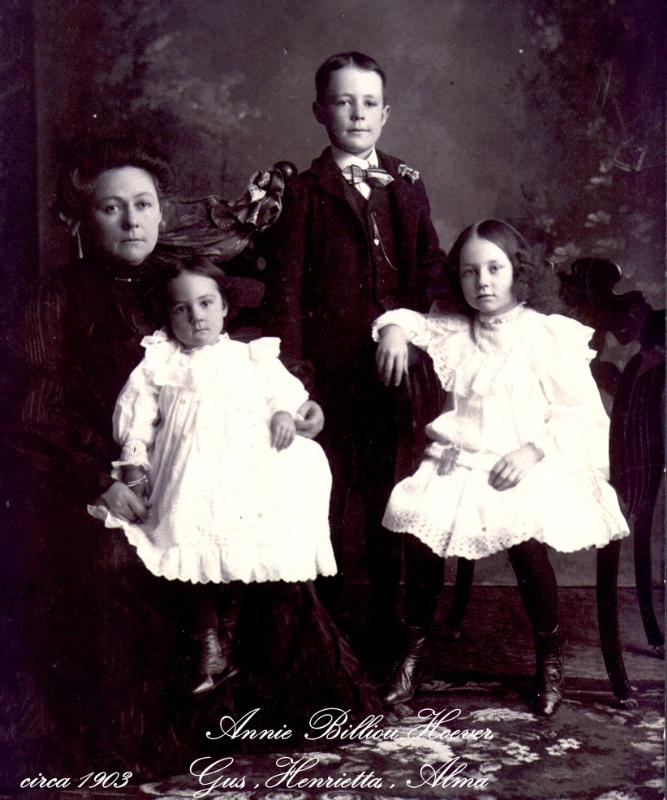By Suzanne Sparrow Watson
When we left Annie in Part One, she had just witnessed the shooting death of her mother and was, in the norms of that time, a spinster. But that was about to change.
In the late 1870’s, John Hoever, our paternal great-grandfather, emigrated from Germany to San Francisco. After a short stay in ‘The City’, he moved to Willows. This is the first indication that he might not have been of sound mind.
In any event, he made the move and opened a jewelry store, the first of its kind in Willows. We don’t know how John and Annie met, but since they lived in a small town, it was either in church or through friends. That is how things were done before Match.com.
John and Annie married in 1892. They had a son in 1893 and our grandmother was born in 1895. Annie got pregnant again in 1899 but John Hoever died months after the baby, a girl, was born. My second cousin didn’t have any information on how John Hoever died, but obviously something went horribly wrong. Another research opportunity!
Unfortunately, this may be a case of “be careful what you ask for”. After hours of searching on the ancestry data bases I finally found was I was looking for – his census record from1900. There he was, recorded for official purposes, in the Napa State Hospital for the Insane. Oh boy…this explains so much about our family.
Annie was no doubt devastated by having to put her husband “away”, especially considering the stigma associated with mental illness in those days. I imagine that his behavior must have been pretty bad for her to decide it was better to raise three small children alone than live with him in the house. John died in September of 1900, presumably from his illness.
Faced with this overwhelming loss, Annie might have chosen to do what so many Victorian women did when their husbands died – don a black dress and stay home for the rest of her life. But Annie was not a typical woman. She made the decision to keep her husband’s jewelry store open and manage it herself.
In a book published in 1918 about the early history of Willows and its inhabitants, the authors noted that “Annie Billiou Hoever took over the management of her husband’s jewelry store after his death. She has demonstrated her ability as a business woman and won great success through her own efforts”. That was quite a high endorsement for a woman to receive in 1918. Heck, it’s a great compliment today.
Annie not only became a successful business woman, she also excelled in raising her three children. Two of the three graduated from Stanford University (our grandmother, the rebel, being the lone exception) and they all went on to lead rewarding lives. She was active in the community and enjoyed a wide circle of friends until her death in 1940. She is buried in a joint grave with John.
Which brings me back to the ring. The diamond had been re-set over the years and the latest iteration “smothered” it. So for our anniversary last year my husband had it put in a new setting so that I could wear it as my engagement ring. Every day when I look at it I think of Annie and of all that this diamond has “seen” in its lifetime. I think about her joys and her sorrows and how she persevered through it all. I wish that I had known more about Annie when I was younger – somehow it gives me strength to know that I come from such an inspiring woman.
So on this Mother’s Day I hope that somewhere Annie knows that she is still remembered and makes her family proud.
Annie with her three children
